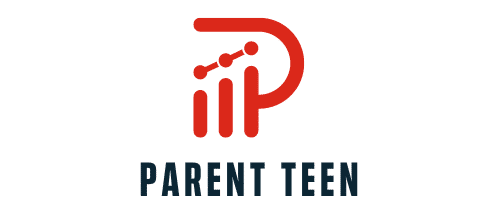What’s the Role of Gamification in Enhancing Language Learning for Children?

In the fast-paced world of education, finding effective, engaging, and innovative ways to capture the attention and interest of children is as essential as it is challenging. We are all aware of the critical role that language acquisition plays in a child’s overall development. Today, we will examine how the concept of gamification is revolutionizing the way children learn languages. We will delve into what gamification entails, its benefits in language learning, and how it is being applied in practical settings.
The Concept of Gamification
Before diving into the role of gamification in language learning, it’s crucial to define what this buzzword means. Derived from the word ‘game’, gamification involves utilizing elements typically associated with games, such as points, badges, or leaderboards, and integrating them into non-game contexts, such as learning activities. Broadly speaking, gamification is a tool designed to make learning more interactive, engaging, and fun.
In the same genre : What Strategies Can Reduce Food Miles and Carbon Footprint in UK’s Food Supply Chain?
In language learning, gamification has emerged as a powerful and effective tool in teaching children new languages. By transforming learning tasks into exciting games, children are more likely to remain engaged and motivated, creating an optimal environment for effective language acquisition.
The Benefits of Gamification in Language Learning
With the increasing integration of technology into classrooms, gamification is fast gaining popularity in language learning. But why is it so effective? Here, we’ll explore the key benefits of gamification for children learning a new language.
In parallel : How Can London’s Historic Buildings Be Retrofitted for Better Energy Efficiency?
Firstly, gamification fosters a sense of engagement. Elements of gamification, such as rewards or competition, can significantly increase children’s interest and participation in language learning activities. When children enjoy what they’re doing, they’re more likely to invest time and effort, making learning more effective.
Secondly, gamification enhances motivation. By setting clear goals and providing instant feedback, gamification motivates children to improve and progress in their language learning journey. This intrinsic motivation leads to increased perseverance, resulting in better language acquisition.
Lastly, gamification improves retention of information. Children are more likely to remember what they’ve learned when information is presented in a game-based format, as opposed to traditional teaching methods. This is because games create a more memorable, immersive learning experience.
Practical Application of Gamification in Language Learning
Now that we’ve covered the benefits of gamification in language learning, how is it applied in practice? There are a myriad of ways in which gamification can be integrated into language learning, and we’ll go through some examples here.
One popular method is through game-based learning apps. These apps often have interactive quizzes, progress tracking, and reward systems that keep children engaged and motivated. Examples include DuoLingo, Rosetta Stone, and Memrise.
Another method is through classroom activities. Teachers can incorporate games into their lesson plans, such as word bingo, vocabulary races, or story-telling games. These activities not only make learning fun but also promote teamwork and communication skills.
The Future of Gamification in Language Learning
As technology continues to evolve, the potential for gamification in language learning is vast. With the rise of virtual reality (VR) and augmented reality (AR), we can expect more immersive, interactive, and innovative language learning experiences in the future.
Imagine, for instance, a language learning game where children can virtually visit different countries, interact with locals, and practice their language skills in real-time scenarios. Such experiences can significantly enhance children’s cultural understanding and proficiency in the language.
In conclusion, gamification is an essential tool in enhancing language learning for children. By making learning more engaging, motivating, and memorable, gamification has the potential to revolutionize language education. As educators and innovators continue to explore and develop new ways of incorporating gamification into language learning, the future of language education looks bright and promising.
Case Studies of Successful Gamification in Language Learning
Up till now, we’ve discussed the theory behind gamification in language learning and its potential benefits. But how does it work in real life? In this section, we’ll delve into successful case studies of gamification in action.
One such example is the language learning app, Duolingo. Duolingo employs various gamification elements such as points, leaderboards, streaks, and virtual currency. Through these features, the app creates a sense of competition, rewards effort and progress, and encourages daily practice. As a result, Duolingo has become one of the most popular language learning platforms, with over 300 million users worldwide.
Another example is the use of Minecraft in language education. Minecraft, a popular sandbox video game, has been used to create immersive, interactive language learning scenarios. For instance, in a Swedish school, students were tasked with building virtual models of historical sites while communicating only in English. This task not only improved their language proficiency but also fostered creativity, collaboration, and critical thinking skills.
These cases demonstrate that with creative use of gamification, traditional language learning can be transformed into a more enjoyable and effective experience.
Limitations and Challenges of Gamification in Language Learning
Despite its many advantages, it’s equally important to acknowledge the limitations and challenges of gamification in language learning.
The success of gamification relies heavily on the design of the game elements and the learning environment. Poorly designed games can lead to demotivation and frustration, defeating the purpose of gamification. Additionally, overemphasis on competition can create stress and anxiety among students, especially those who are struggling.
Moreover, not every aspect of language learning can be gamified. Some language concepts require intensive study and practice, which may not align well with game-based learning.
Lastly, there’s the challenge of access and equity. Not all students have equal access to the technology required for game-based learning. As such, relying solely on gamification may exacerbate educational disparities.
Conclusion: Harnessing the Power of Gamification
As we have observed, gamification can bring a myriad of benefits to language learning for children, from enhancing engagement, motivation, to improving retention of information. Through practical application, as seen in cases like Duolingo and Minecraft, gamification can indeed revolutionize the way children learn languages.
However, it’s essential to remember that gamification is not a magic solution to all the challenges of language education. It should be used as a tool, in conjunction with other teaching methods, to create a holistic, balanced learning experience.
In the future, with the advent of technologies like VR and AR, we can expect gamification to become even more immersive and engaging. As we continue to explore the possibilities of gamification in language learning, it’s crucial to address its limitations and challenges to ensure it benefits all learners.
Gamification has the potential to make language learning an exciting, enjoyable journey for children. As educators and innovators, it’s our task to harness this potential and transform it into reality.
